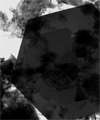June
Evidence of oceanic ‘green rust’ offers hope for the future

A rare kind of mineral which scientists hope could be used to remove toxic metals and radioactive species from the environment played a similar, crucial role early in Earth’s history.
Research carried out by an international team of leading biogeochemists suggests for the first time that ‘green rust’ was likely widespread in ancient oceans and may have played a vital role in the creation of our early atmosphere.Led by Newcastle University, UK, the study shows that during the Precambrian period, green rust ‘scavenged’ heavy metals such as nickel out of the water. Nickel availability is linked to the production of methane by anaerobic organisms, which is a major sink for oxygen produced during photosynthesis, and thus green rust played a crucial role in the oxygenation of the Earth’s atmosphere.
Only discovered in the last decade, green rust is a highly reactive iron mineral which experts hope could be used to clean up metal pollution and even radioactive waste.
Newcastle University’s Professor Simon Poulton said this latest discovery – published this month in the academic journal Geology – proved the effectiveness of green rust as an environmental cleaner.
“Because it is so reactive, green rust has hardly ever been found before in nature and never in a water system like this,” explains Professor Poulton, who led the research team involving experts from the Universities of Newcastle, Nancy, Southern Denmark, Leeds, Brussels and Kansas, and the Canadian Light Source and Indonesian Institute of Sciences.
“The discovery of green rust in Lake Matano, Indonesia, where we carried out our experiments shows for the first time what a key role it played in our ancient oceans – scavenging dissolved nickel, a key micronutrient for methanogenesis.”
Dr Sean Crowe of the University of Southern Denmark explains: “We still know relatively little about green rust but our research shows that it is likely to be much more prevalent in the environment than has previously been recognised and the role it plays in cycling elements such as nickel and other metals is significant.
“Understanding the important role it played in our past and its effectiveness at removing metals from the environment will help us to understand how we might be able to use it to clean up polluted land and water in the future.”
The high reactivity of green rust is the reason it could be so much help in cleaning up polluted sites. The rust reduces elements like chromium, uranium and selenium, significantly reducing their solubility and mobility in the environment, and in some cases absorbing them into the rust's molecular structure.
Professor Poulton adds: “Green rust has received a lot of attention recently due to its possible role as a pollutant mediator, but it is particularly exciting to think that this may have been a natural process throughout huge periods of ancient Earth history.”
published on: 27 June 2012
